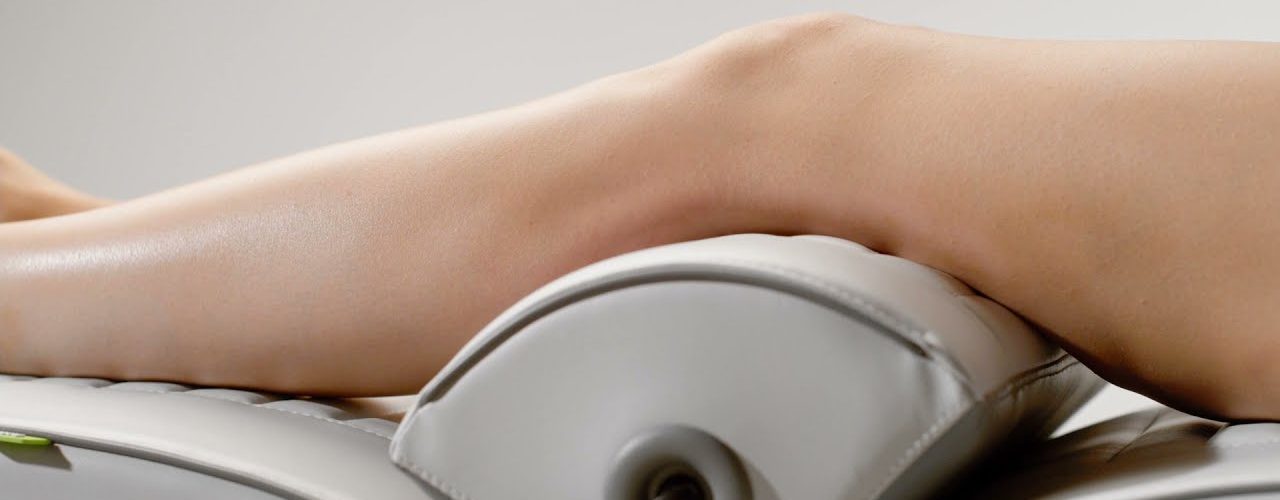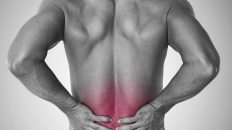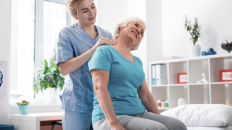Human ageing is an inevitable process. The proportion of older people in the Polish population has reached 25.6%. According to a forecast by the Central Statistical Office (CSO), the number of people aged 60 and over in Poland is expected to increase to 10.8 million in 2030.
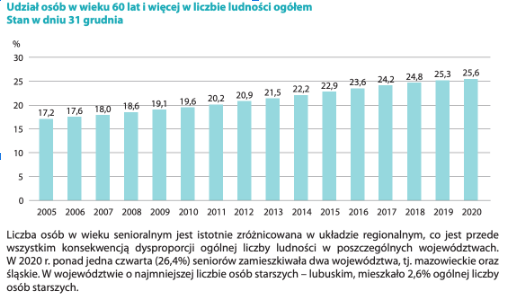
Sedentary lifestyles, low levels of activity among seniors, lifestyle diseases and excessive drug consumption have a fundamental impact on the quality of ageing. The number of geriatric wards, which already treat nearly 30,000 people, is growing every year. On average, there are as many as 7.2 outpatient consultations per senior citizen, which accounted for 62.6% of all outpatient consultations given in 2020. Although statistics indicate that the overall physical condition of Polish seniors is worryingly poor, the situation is beginning to improve as a result of research into improving physical condition in people over 60.
Scientific research into the effects of vibrotherapy on the muscular system, in people suffering from conditions such as sarcopenia, for example, has yielded highly positive results. Prof Bosco from the Medical University of Rome, using vibration treatments on the thigh muscles for 12 weeks, noticed an increase in maximum muscle strength and an increase in myosin (the ‘motor’ proteins found in muscle tissue, capable of converting chemical energy into mechanical energy, generating movement). This is excellent news for seniors with movement disorders and joint disease.
The study, conducted by Polish researchers from the Medical University of Lodz (P. Mrozek), found that after vibration therapy sessions, a reduction in pain intensity of 50% was recorded for chronic pain sufferers and 88% for those with acute pain. Participants in the study significantly reduced the use of analgesics (by 55% for chronic pain patients) and noticed an improvement in quality of life.
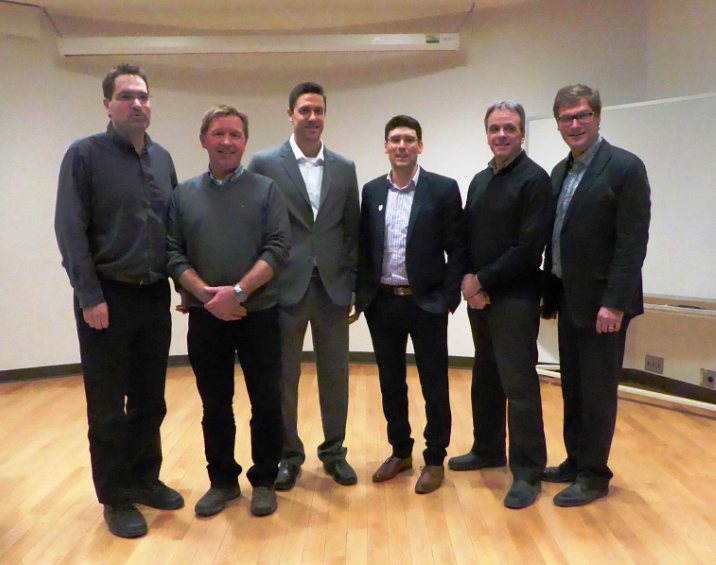
In 2015, a group of researchers from the Univ. of Quebec, Canada, led by Dr Jean-Alexandre Boucher, conducted an interesting medical experiment in a group of 40 volunteers, 20 of whom had chronic low back pain. They published the results of their study in a paper entitled: “Effects of vibration and muscle fatigue on sensorimotor control of the trunk in patients with low back pain.” [Dr Jean-Alexandre Boucher et al, Department of Psychology, University of Quebec, Canada.]
Dr Jean-Alexandre Boucher and colleagues, in their study, noted that local muscle vibration led to significant improvements in trunk neuromuscular control in patients with chronic low back pain, and in turn, to better improvements in patients’ posture. Poor posture can affect back muscle fatigue and compound the effect of pain.In people with chronic low back pain, changes in certain physiological functions such as reduced sensation, altered muscle activation patterns, changes in somatosensory areas of the cortex and maintenance of correct posture are often observed.
Today, much research is being conducted attempting to exploit the effects of vibration stimulation on the activation of muscle spindles by Ia afferent fibres, leading to a response via the tonic vibration reflex (TVR). Some studies have indicated beneficial effects from topical vibration, such as a significant increase in muscle activity and average mechanical power recorded during contractions of, for example, the upper limb.
Research by Canadian scientists confirms that vibrotherapy applied topically, reduces pain and can be used as a full-fledged method and treatment for pain. Successful ageing means reaching old age with a low risk of disease and infirmity, with a high level of mental and physical fitness and maintained life activity also in the sphere of social and social contacts. Regular physical activity, vibration therapy and an age-appropriate diet can significantly slow down the ageing process and preserve mental and physical fitness for as long as possible.
A lack of exercise can lead to infirmity and even, in some cases, physical disability. One possible consequence of lack of exercise is rapidly progressive sarcopenia.
References:
- Mossakowska M. (red.). (2012) Aspekty medyczne, psychologiczne, socjologiczne i ekonomiczne starzenia się ludzi w Polsce. Termedia Wydawnictwo Medyczne. Poznań. LINK
- AOTM (2012) Opinia Prezesa Agencji Oceny Technologii Medycznych nr 227/2012 z dnia 19 listopada 2012 r. o projekcie programu zdrowotnego miasta Katowice „Program profilaktyki dla osób trzeciego i czwartego wieku”. LINK
- Mazurek J, Szczygieł J, Blaszkowska A, Zgajewska K (2014) Aktualne zalecenia dotyczące aktywności ruchowej osób w podeszłym wieku. Gerontologia Polska 2014: 2,70-75. LINK
- Gryglewska B: Prewencja gerontologiczna. W: Grodzicki T, Kocemba J, Skalska A: Geriatria z elementami gerontologii ogólnej. Via Medica, Gdańsk 2006: 47–52. LINK
- Kaczmarczyk M, Trafiałek E (2007) Aktywizacja osób w starszym wieku, jako szansa na pomyślne starzenie. Gerontologia Polska 2007, 15(4):116–118. LINK
- Strzelecki A, Ciechanowicz R, Zdrojewski Z (2011) Sarkopenia wieku podeszłego. Gerontologia Polska 2011, 19, 3–4:134–145. LINK
- Fulle S, Protasi F, Di Tano G, et al. (2004) The contribution of reactive oxygen species to sarcopenia and muscle ageing. Exp Geront 2004.39: 17-24. LINK
- Bosco C, Iacovelli M, Tsarpela O, et al. (2000) Hormonal responses to whole-body vibration in men. Eur J Appl Physiol 2000, 81: 449-454. LINK
- Pietrangelo T, Mancinelli R, Toniolo L, Cancellara L, Paoli A, Puglielli C, Iodice P, Doria Ch, Bosco G, D’amelio L, Di Tano G, Fulle S, Saggini R, Fano G, Reggiani C (2009) Effects of local vibrations on skeletal muscle trophism in elderly people. Mechanical, cellular, and molecular events. International LINK
- Domżał T. Ból przewlekły – problemy kliniczne i terapeutyczne. Pol. Przegl. Neurol 2008;4(1):1-8. LINK
- Kuty-Pachecka M., Trzebińska M. Ból przewlekły – definicje, modele i terapia poznawczo-behawioralna. Psychiatr Psychol Klin 2018, 18 (1), p. 41-48. LINK
- Dobrogowski J. Niefarmakologiczne metody leczenia bólu Niefarmakologiczne metody leczenia bólu. Pol. Przegl. Neurol 2007;3(4):272-278. LINK
- Mrozek P. (2010) Ocena wyników leczenia dolegliwości bólowych kręgosłupa w odcinku lędźwiowo-krzyżowym masażem wibroakustycznym, Uniwersytet Medyczny w Łodzi. LINK
- Sang-Soo K, Sung-Bum J, Gi Duck P (2015) Changes in stress hormone levels with the application of vibrations before resistance exercises at different intensities, Journal of physical therapy science 27(9): 2845–2847. doi: 10.1589/jpts.27.2845 LINK
- Boucher J.A., Abboud J., Nougarou F., Normand M.C., Descarreaux M. The Effects of Vibration and Muscle Fatigue on Trunk Sensorimotor Control in Low Back Pain Patients. PLoS One. 2015; 10(8):e0135838 LINK
- Dahlin L., Lund I., Lundeberg T., Molander C. Vibratory stimulation increase the electro-cutaneous sensory detection and pain thresholds in women but not in men. BMC Complement Altern Med. 2006; 6: 20. LINK
- Wunram H.L., Hamacher S., Hellmich M., Volk M., Jänicke F., Reinhard F., Bloch W., Zimmer P., Graf C., Schönau E., Lehmkuhl G., Bender S. & Fricke O. Whole body vibration added to treatment as usual is effective in adolescents with depression: a partly randomized, three-armed clinical trial in inpatients, European child & adolescent psychiatry, Jg. 27, Nr. 5, S. 645-662. LINK
- Rokutanda T., Izumiya Y., Miura M., Fukuda S., Shimada K., Izumi Y. et al., 2011. Passive exercise using whole-body periodic acceleration enhances blood supply to ischemic hindlimb. Arterioscler Thromb Vasc Biol 31(12):2872–80. LINK

